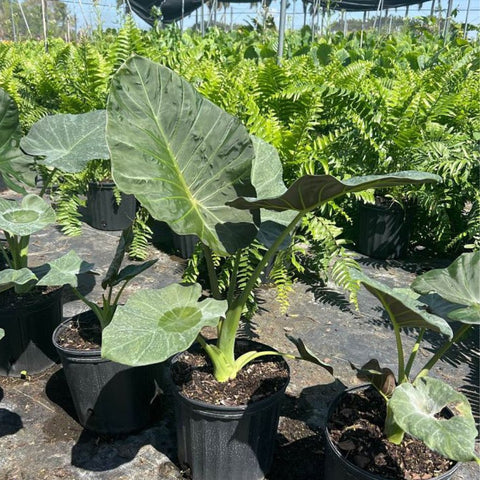Introduction: The Joy of Spring Gardening
Spring is when the earth awakens from its wintry slumber, ready to burst forth with new life and vibrant colors. For gardeners, there’s no season quite like spring for starting anew. The air is filled with the fresh scent of blooming flowers and the promise of bountiful harvests just a few months down the line. As you dig your fingers into the cool earth, planning your vegetable garden becomes an exciting adventure filled with possibilities.
Planning and planting the right vegetables in spring can pave the way for a thriving garden that will provide fresh produce throughout the growing season. From flavorful greens to hearty root vegetables, the variety you can cultivate is nothing short of spectacular.
Beyond the joy of watching your garden grow, cultivating your own vegetables has numerous benefits. It’s an economic choice that ensures you always have fresh produce at hand. It’s also a sustainable practice, reducing your carbon footprint by minimizing the need for store-bought produce that travels miles to reach your kitchen.

Understanding Spring Gardening Basics
2.1. Soil Preparation and Health
Your garden's success starts with the soil. Healthy soil is the foundation of any thriving garden, providing the necessary nutrients for your plants to grow. Preparing your soil in spring sets the stage for a bountiful harvest.
Soil Testing
The first step in soil preparation is testing. This helps you understand the pH level and nutrient content of your soil. You can purchase a simple soil test kit or send a sample to a local extension service for analysis. The results will guide you on any necessary amendments.
Amending the Soil
Once you know what your soil lacks, you can begin enriching it with organic matter like compost or well-rotted manure. This not only improves nutrient content but also enhances soil texture, allowing for better drainage and root growth. Magical combinations like vermiculite and peat can also be mixed in to promote aeration and moisture retention.
Tilling and Aeration
A crucial part of soil preparation is tilling. By turning over the soil, you break up compact layers, allowing roots to penetrate more easily. This process also exposes any pests or diseases that may have overwintered, reducing their impact.
Explore our soil conditioners and amendments to find the right mix for your garden.

2.2. Choosing the Right Location
The right location is key to the success of your vegetable garden. Most vegetables require full sun, meaning at least six to eight hours of direct sunlight per day. Consider the following when selecting a spot:
Sunlight
Observe the light patterns in your garden throughout the day. Remember, the sun’s path changes slightly as spring progresses. Ensure your chosen site isn’t shaded by trees, fences, or buildings.
Proximity to Water
Your vegetable garden will need regular watering, especially during dry spells. Positioning it near a water source, like a hose or rain barrel, will make this task much easier.
Protection from Wind
Consider windbreaks to protect your plants. A hedge or fence can act as a natural barrier, preventing delicate seedlings from being damaged by strong winds. For pre-planted shelters, our Alexander Palms make excellent windbreaks in a garden setting.
2.3. Selecting Seeds and Seedlings
Spring offers a vast selection of vegetables to grow, each suited to different conditions and preferences. Selecting the right seeds or seedlings can set you up for success.
Choosing What to Grow
When deciding what to plant, consider factors like your region’s climate, your garden's soil type, and your culinary preferences. Cool-weather vegetables like lettuce, spinach, and peas thrive in early spring, while corn and tomatoes prefer warmer temperatures.

Seed or Seedling?
You have the choice of starting with seeds or seedlings. Seeds are cost-effective and allow you to experiment with different varieties. However, seedlings give you a head start, which can be beneficial in regions with shorter growing seasons.
Heirloom vs. Hybrid
Deciding between heirloom and hybrid varieties is another consideration. Heirloom vegetables are treasured for their flavor and historical significance. In contrast, hybrids are bred for traits like disease resistance and uniformity.
Discover our wide range of seeds and seedlings perfect for spring planting.
Best Vegetables to Plant in Spring
3.1. Leafy Greens
Leafy greens are an excellent choice for spring gardens. They grow quickly and can be harvested multiple times throughout the season.
Lettuce
Lettuce is easy to grow and offers a wide array of varieties, from crisp iceberg to tender butterhead. Plant lettuce seeds directly into the soil and keep them well-watered for a quick, successive harvest.
Spinach
Spinach thrives in the cool temperatures of spring. Rich in iron and vitamins, it's a nutritious addition to any garden. Plant seeds directly in soil, and enjoy fresh leaves in just a few weeks.
Consider our Agapanthus, a perfect companion plant to leafy greens, offering beautiful blooms that attract beneficial pollinators.

3.2. Root Vegetables
Root vegetables are resilient and can be planted as soon as the ground is workable in spring. They store well, providing nutrition even after the growing season.
Carrots
Carrots require sandy, well-drained soil. Thin them early to give each carrot room to grow. They are rich in beta-carotene, making them a healthy, crunchy snack straight from the garden.
Beets
Beets are versatile; you can eat both the roots and the greens. Direct sow seeds in prepared soil, and thin them early to ensure plenty of room for the roots to expand.
Radishes
If you’re looking for a quick harvest, radishes are unrivaled. They can be ready to eat in as little as three weeks after sowing. Their peppery flavor adds zest to salads and dishes.
3.3. Legumes
Legumes such as peas and beans are fantastic choices for spring gardens. Not only do they provide delicious produce, but they also enrich the soil with nitrogen.
Peas
Peas are frost-tolerant and can be one of the first crops to go into the ground. Choose from snap peas, snow peas, or shelling peas, and plant them alongside a support structure like a trellis.
Broad Beans
Broad beans, or fava beans, are hardy and easy to grow. They thrive in cool weather and can handle a bit of spring frost.

Enhance your legume garden with our selection of beautiful landscape features from Adonidia Palm Doubles or Adonidia Palm Singles to provide visual interest year-round.
3.4. Cruciferous Vegetables
Brassicas like cabbage, broccoli, and cauliflower are well-suited to cooler weather and make excellent spring plantings. They are lush vegetables packed with nutrients.
Cabbage
Cabbage loves the mild weather of spring. It requires ample space to spread its leaves and should be planted early for optimal flavor and texture.
Broccoli
Start broccoli seeds indoors in late winter and transplant them into the garden in early spring. Broccoli heads are rich in vitamins and can be used in a variety of dishes.
Cauliflower
Cauliflower can be a bit finicky but well worth the effort. It requires steady, cool temperatures and plenty of water to prevent "browning." Experiment with different colors, such as yellow or purple varieties, for a visual treat.
Spring Gardening Best Practices
4.1. Watering and Irrigation
Proper watering is essential for a thriving vegetable garden. Overhead sprinkling or drip irrigation systems can help maintain consistent moisture levels.

Establishing a Schedule
Avoid over-watering, which can lead to root rot. Aim to provide about an inch of water per week, adjusting for rainfall. Water early in the morning to reduce evaporation and fungal diseases.
4.2. Fertilizing and Composting
Vegetables are heavy feeders, and spring is the perfect time to add nutrients to your soil. Compost boosts soil fertility, while balanced fertilizers enhance plant growth.
Compost Application
Spread a layer of homemade compost or purchase a mix to top-dress your beds. High in organic matter, compost improves soil texture and provides a slow release of nutrients.
4.3. Pest and Disease Control
Pests and diseases can affect spring gardens. Implementing integrated pest management and exploring natural remedies will help keep your plants healthy.
Companion Planting
Use companion planting to naturally deter pests. Marigolds and mint act as repellents for many garden nuisances.
Agave plants can serve double duty as borders, keeping pests away from vegetable beds due to their intense fragrance.

Conclusion: Reaping the Harvest
Spring vegetable gardening is a rewarding endeavor that offers nutritious benefits and enhances your home's beauty. By understanding the basics, selecting appropriate varieties, and employing best gardening practices, you're well on your way to a flourishing seasonal garden.
Embrace the joy and satisfaction of growing your own vegetables with Plantology's top-quality seeds, plants, and gardening supplies. Visit us at Plantology to browse our complete range and receive expert advice tailored to your gardening needs. Happy planting!
Diverse Strategies for Maximizing Your Spring Garden
Maximizing the potential of your spring garden goes beyond merely choosing the right place or planting the right vegetables. A holistic approach that involves strategic planning and innovation can significantly enhance your gardening results. Here's how you can elevate your spring garden to its full potential.
5.1. Succession Planting
Succession planting is an efficient method that helps maximize space and ensures a continuous harvest. This involves planting a second crop immediately after harvesting the first. For example:
Example: After harvesting early carrots, consider planting fast-growing greens like lettuce or arugula, which will mature quickly.
Tip: Stagger your planting dates every few weeks instead of sowing everything at once. This practice ensures that your garden isn't overwhelmed with produce at one time and provides a constant supply throughout the season.

5.2. Companion Planting for Optimal Growth
Companion planting involves growing different plants together to enhance growth, deter pests, or provide other benefits like shade or support for climbing plants. Some classic pairings include:
- Tomatoes and Basil: Basil repels insects like aphids and adds flavor to your tomatoes when planted nearby.
- Beans and Corn: Beans fix nitrogen in the soil, which corn uses for its growth, while corn provides support for bean vines.
- Zucchini and Borage: Borage attracts pollinators and improves the flavor of nearby zucchinis, while also deterring pests.
5.3. Implementing Crop Rotation
Crop rotation is crucial for maintaining soil health and minimizing pest and disease buildup. Each type of plant depletes the soil of different nutrients, so rotating crops prevents depletion. For example:
Rotation Example: Follow a cycle of leafy greens, fruiting plants like tomatoes or peppers, root vegetables, and legumes. This pattern prevents nutrient loss and interrupts pest cycles.
5.4. Raised Beds for Improved Management
Raised beds offer excellent drainage, help warm the soil faster in spring, and allow for better control over soil conditions. They can be constructed from wood, stone, or other durable materials. Their benefits include:
-
Ease of Access: Raised beds are accessible and require less bending, making gardening comfortable for all ages.

- Efficient Use of Space: Higher planting density is possible in raised beds, leading to higher yields per square foot.
- Pest Control: Elevated beds reduce the likelihood of pests reaching your plants.
5.5. Intercropping for Diversity and Yield
Intercropping involves planting two or more crops in proximity. This strategy maximizes space and often leads to higher yields, better pest management, and greater biodiversity. Consider these intercropping ideas:
- Radishes and Carrots: Radishes mature quickly and can be harvested to make room for slower-growing carrots.
- Onions and Cabbage: Onions deter pests like cabbage loopers that commonly affect cabbage.
Innovations and Tools for the Modern Gardener
Adopting modern gardening tools and innovations can simplify your work and increase efficiency. Here are some popular advancements and gadgets to consider as you prepare for an abundant growing season:
6.1. Smart Irrigation Systems
Smart irrigation systems use technology to optimize watering schedules and amounts based on weather forecasts, soil moisture sensors, and plant types. Their benefits include:
- Water Conservation: Deliver precise amounts of water, reducing waste.
-
Time Efficiency: Automation minimizes the need for manual watering.

6.2. Garden Planning Apps
Garden planning apps assist with designing your layout, selecting plants appropriate for your zone, and tracking planting schedules. Consider using apps like:
- Planter: Features a vegetable garden planner that assists with plant spacing and succession planting.
- Gardenate: Provides monthly planting guides and reminders for timely actions.
6.3. Vertical Gardening Solutions
Space-efficient vertical gardens allow you to maximize limited areas, particularly useful for urban gardening. Some solutions include:
- Wall Planters: Perfect for growing herbs and greens on balconies or patios.
- Stackable Planters: Utilize vertical space to grow strawberries, peppers, or smaller fruit.
6.4. Compost Tumblers
Efficient composting is key to sustainable gardening. Compost tumblers facilitate faster decomposition and are convenient for home use:
- Speedy Composting: Tumbling aerates the pile, speeding up compost production.
-
Space-Efficiency: They require less space and are ideal for small gardens or yards.

6.5. Utilizing Cold Frames
Cold frames are simple, ground-level enclosures that trap heat from the sun to assist in extending growing seasons. They are invaluable for hardening seedlings or growing early spring crops:
- Frost Protection: Safeguard seedlings from unexpected frosts in early spring.
- Season Extension: Allows gardeners to start planting earlier and harvest longer into the fall.
Engaging With the Gardening Community
Gardening offers more than the tangible reward of plants and produce. It's a communal activity that connects you with others who share your passion. Engaging with fellow gardeners opens up avenues for learning, sharing, and mutual support. Below are some opportunities to engage with the gardening community:
7.1. Joining Local Gardening Clubs
Local gardening clubs are excellent for meeting fellow enthusiasts, learning new techniques, and sharing resources. They often host events, workshops, and plant exchanges that provide both beginners and experts opportunities to expand their knowledge and gardens.
7.2. Participating in Online Gardening Forums
Online gardening forums are a treasure trove of shared wisdom where you can seek advice or share your experiences. Websites like GardenWeb and Reddit’s r/gardening offer diverse communities with participants from around the globe, bringing in varied perspectives.

7.3. Collaborating in Community Gardens
Community gardens bring together people from different backgrounds to share a common space to grow food and flowers. These gardens promote sustainable practices, biodiversity, and food security within urban environments, while also fostering a sense of community and collective achievement.
7.4. Attending Gardening Workshops
Workshops provide hands-on learning experiences and opportunities to delve deeper into specific topics, such as organic gardening, landscape design, or sustainable practices. They are often hosted by botanical gardens, agricultural extensions, or experienced local gardeners and organizations.
7.5. Sharing Your Journey on Social Media
Documenting your gardening journey on social media can be a source of inspiration, learning, and connection. Platforms like Instagram or YouTube allow you to reach a global audience, receive feedback, and exchange ideas with gardeners from diverse settings.
Conclusion: Embracing the Beauty and Bounty of Spring
As you embark on your spring gardening adventure, remember that the process involves continuous learning, adaptation, and patience. The joy of nurturing a garden lies not only in the produce you reap but in the experience of connecting with nature's rhythms and discovering new pathways to growth.

Whether you're a seasoned gardener or a curious newcomer, every season presents opportunities for innovation and discovery. With the foundational knowledge and tools outlined in this guide, you're well-equipped to create a garden that flourishes with vibrant life, joyful blooms, and nourishing vegetables.
At Plantology, we support your gardening journey with a selection of high-quality seeds, plants, and expert advice. Embrace spring with enthusiasm, and let the garden of your dreams come alive with each seed you plant and every leaf you nurture. Happy gardening!
Visit us at Plantology to explore our range of products and join a community that celebrates the art and joy of gardening.























Comments (0)
There are no comments for this article. Be the first one to leave a message!